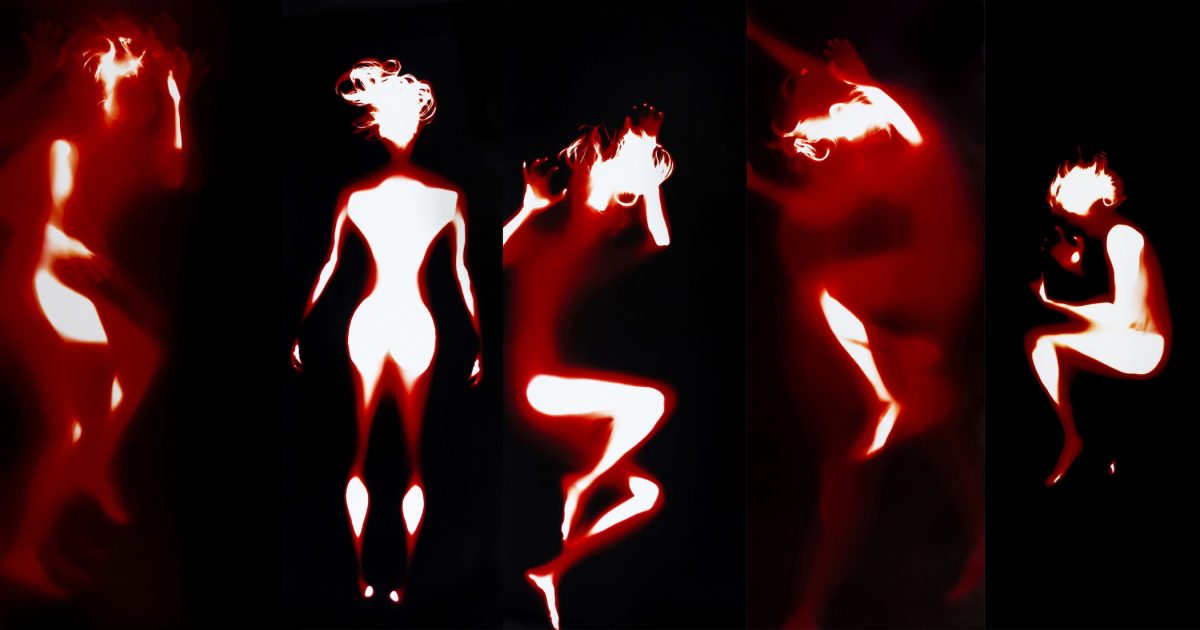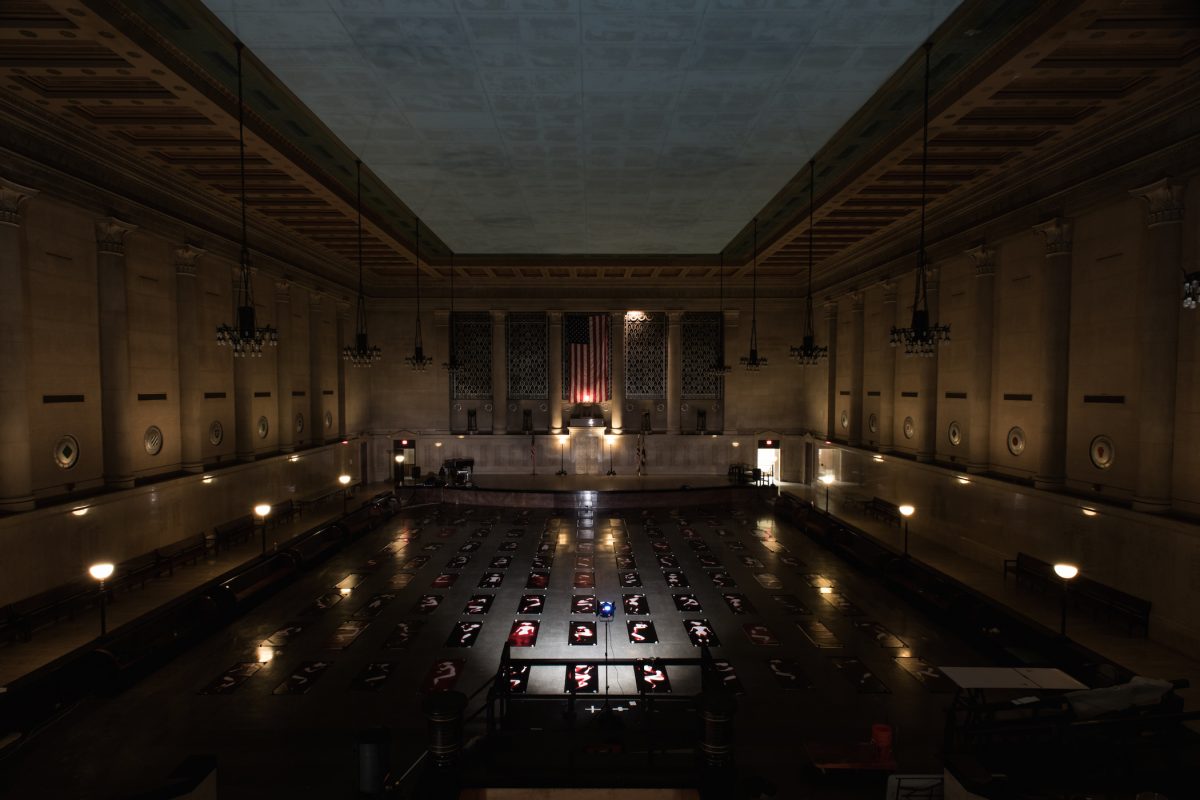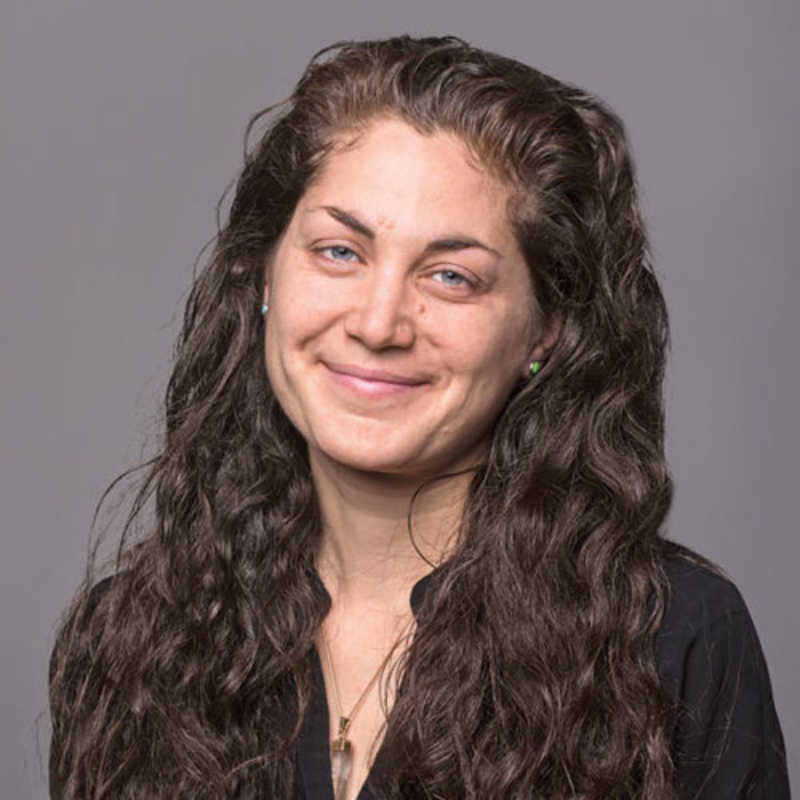
Incoming generations are often left to clean up—or at the very least make sense of—whatever messes were left behind by the generations that came before, though it’s not always done by way of art.
The effects of the Hiroshima bombing can never be completely erased, no matter how much time passes or what measures are taken, but two Baltimore artists with a unique context to the event through their own family histories have come together to make manifest a reconciliation of sorts.
In what one might call fate, Kei Ito and Andrew Paul Keiper met as potential roommates while students at MICA, only to learn during an initial conversation that they had something powerful in common. Ito’s grandfather witnessed the atomic-bomb explosion at Hiroshima, which killed his entire family and left its radioactive imprint on his own body.
Keiper’s grandfather was an engineer who worked for the top-secret Manhattan Project that developed the A-bomb. As artists (who did become housemates), Ito and Keiper knew they needed to collaborate on a project together to explore this inheritance and bridge together two personal histories that are so extremely at odds with one another. The result is Afterimage Requiem, a large-scale installation on view at the Baltimore War Memorial through January 31. (As an aside, theirs is the first art exhibit to ever be shown in the building.)
Even without knowing the story behind the Afterimage Requiem, the piece is distinctly chilling. More than 100 life-sized photograms of Ito’s body (made by lying directly on light-sensitive photographic paper) lay flat on the floor, weighted down by smooth stones, in long rows. Spaces between each image allow you to walk through the installation, looking earthward to view the work. One dramatic light beams down in the otherwise dark space—a blinding presence that connotes the bomb itself.
Ambient industrial and natural sounds manufactured by Keiper are projected from four tall speakers, one in each corner of the room. As you walk through the piece, the human figures lying in various positions underneath you might not immediately evoke Hiroshima, but they surely suggest a war or mass shooting or mass burial—i.e., the remains of some disaster.
It’s a profound statement on the aftermath of a tragedy, but it’s not meant to be seen purely as a reflection of a historical event. The purpose of art is to “use these personal, historical events to talk about contemporary issues,” Ito says in an artist talk on opening night. “This nuclear crisis . . . we think it’s a past history. It’s not.”
Just days before the show opened, in fact, the false missile alert in Hawaii made headlines. And President Trump’s continual threats of nuclear war on North Korea have caused an undercurrent of anxiety.
Ito was just 9 when his grandfather died, so he never got the chance to ask about Hiroshima, which he regrets now. But he remembers his grandfather describing the bomb as being like “a hundred suns lighting the sky,” and that image stayed with Ito. In his photograms, he uses his body as the camera, and as he sees it, his grandfather’s body acted as a camera, too, recording the light of the A-bomb and passing it on through his altered DNA, ultimately to Ito.

The sounds emitted in the space are split into four channels: two of industrial noises, meant to conjure up the processes used to build the A-bomb, and two of natural sounds, symbolizing the bomb’s effect on the natural world. The artists collected field recordings from such sites as Los Alamos, New Mexico, where the bombs were developed. In essence, Keiper’s portion of the installation represents his family’s contribution that led to the event, while Ito’s work represents the event’s aftermath as experienced by his family.
Though daunting, Ito made 108 photograms of his body, a recurring number in his work that is not without reason. At the end of each year, per tradition in Japan, each Buddhist temple sounds its bells 108 times to symbolize the cleansing of the 108 evil desires we have as humans, to face the new year with a clean slate. “You can hear it everywhere,” Ito says of the bells. In continuing that thought, he adds that through his work, he tries to find hope. “I think that’s my ultimate goal.”
